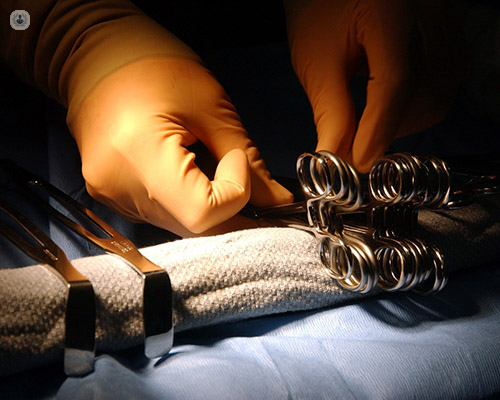Hand nerve repair surgery
Mr Mel Tohill - Plastic surgery
Created on: 11-13-2012
Updated on: 04-18-2023
Edited by: Conor Dunworth
What is hand nerve repair surgery?
Hand nerve repair surgery is a complex and delicate surgical procedure that aims to reconnect any torn or broken nerves in the hand. The nerves in our hands originate in our necks, travel over the shoulders and into our fingers. There are three main nerves that allow us to sense touch, feel pain and notice hot and cold temperatures, as well as stimulate muscles to move our fingers. The three main nerves in the hands are the radial nerve, ulnar nerve and median nerve.

Sometimes, these nerves can get damaged from trauma, pressure and other injuries. If the damage is severe, causing the nerve to tear or break, it can cause a loss of motor and sensory functions in the hand, wrist and arm and you will need surgery to repair and restore function.
What are the symptoms of nerve damage?
- Loss of sensation
- Weakness in the hand, wrist or arm
- Numbness and tingling
- Pain
- Increased sensitivity
- Problems positioning the hand correctly
As well as injuries, some conditions can damage the nerves in the hand such as carpal tunnel syndrome and Dupuytren's contracture.
What does hand nerve repair surgery involve?
Four possible surgery options include:
- End-to-end closure — the end of the nerve are reattached
- Nerve transfer — an intact nerve is transferred over to restructure the torn nerve
- Nerve graft — part of the intact nerve is transplanted to help restructure the damaged nerve
- Vascularised nerve graft — similar to a nerve graft, however, it is used when the is no local blood supply to the nerve
The procedures can be done either under local or general anaesthesia. Sometimes, Wide Awake Hand Surgery (WALANT) is used which allows a surgeon to operate on your hand while you are awake.
What happens after the surgery?
Following surgery, your hand will be placed in a protective splint to aid in your recovery. You may experience swelling, pain, numbness and sensory and motor deficits. You should fully recover from the effects of surgery after one month.
Following hand nerve repair surgery, you will need to start physiotherapy to enhance your rehabilitation and restore movement. Physiotherapy will focus on restoration of sensory and motor function and is essential.




